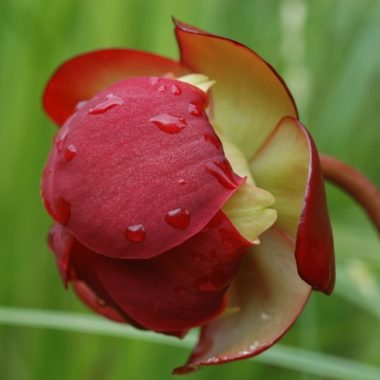
To some, they’re mere expanses of muck, but the bogs of the Acadian Forest Region host some of botany’s most fascinating occurrences.
The soil, typically low in nutrients and highly acidic, prompts plants here to evolve complex mechanisms for nutrition – namely, ensnaring and digesting small prey.
The pitcher-plant, for example, is one of 17 species of carnivorous plants found in and around Acadian Forest bogs. The plants’ leaves collect rainwater, creating a habitat for specific fly, mosquito, and midge larvae. Mimicking flowers, these “pitchers” attract small prey such as ants or small insects. Prey locate sugary secretions released by glands on the lip of the pitcher and, while feeding, tumble into the water below, where hairs lining the pitcher prevent any escape. The resident larvae feed on the drowned prey and excrete waste into the water of the pitcher, making nitrogen and other nutrients accessible to the plant. This is just one captivating example of the complex and mysterious relationship between plants and animals.


 Acadia University
Acadia University